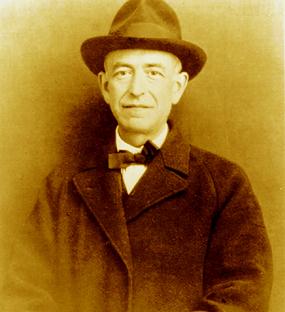A short time ago, I suddenly realised that since this column first saw the light of day, it hasn’t featured any music by Spanish composers. I really don’t know why, because I’ve got nothing against them. Honestly, I haven’t. But the fact that after the Spanish Golden Age, the country didn’t produce a single important composer for over a hundred years may have had something to do with it.
You see, Spain’s Golden Age coincided with the rise and fall of the Spanish Habsburg dynasty and those momentous sea voyages of Columbus. It was a time when Spanish painting, sculpture, architecture, music and literature flourished as never before. Then suddenly, after decades of intense creative activity the great wane began. Spain started to lose its influence in the field of the arts and became overshadowed on the European stage by new developments in Italy, France and Germany.
 Manuel de Falla.
Manuel de Falla.
The last great Spanish writer of the period, Pedro Calderón de la Barca died in 1681, a year that’s considered as marking the end of the Spanish Golden Age in the arts. During the late baroque and classical periods (roughly between 1685 and 1800) although folk music thrived, virtually no Spanish composers achieved European recognition. What was once one of the most powerful countries in Europe had become – artistically at any rate – a shadow of its former self.
It wasn’t until towards the end of the nineteenth century that Spanish music came back into vogue but surprisingly, not because of Spanish composers. In 1875, the French composer Georges Bizet wrote his Spanish opera Carmen and another Frenchman, Emmanuel Chabrier wrote the popular orchestral piece España in the 1880s. A few years later, the Russian composer Rimsky-Korsakov wrote his Capriccio Espangnol.
It wasn’t until the twilight years of the nineteenth century that Spain began to find its musical voice again, through the music of people such as Sarasate, Albéniz, Granados and Tárrega. Incidentally, we have to thank the composer Francisco Tárrega for the iconic “Nokia Tune” which is a four-bar phrase lifted from Gran Vals, one of his pieces for solo guitar composed in 1902.
The arrival of the twentieth century brought something of a long-awaited renaissance with the music of Rodrigo, Torroba, Turina and Manuel de Falla, who was perhaps the greatest Spanish composer of the twentieth century. He has been succeeded by a raft of younger Spanish composers who are bringing Spain back on to the musical map.
Manuel de Falla (1876-1946): The Three-Cornered Hat – Suites 1 and 2. National Orchestra of Spain cond. Jesús López Cobos (Duration: 22:08; Video: 720p HD)
If you were an artist or composer during the first decade of the twentieth century, Paris was the place to be. Manuel de Falla moved there in 1907 and stayed for seven years. He met and was influenced by Ravel, Debussy, Paul Dukas, Stravinsky, Albéniz and the founder of the Ballet Russes, Sergei Diaghilev. Even so, de Falla retained his interest in traditional Spanish music, especially the flamenco music of Andalusia.
“The Three-Cornered Hat” (El sombrero de tres picos) was a ballet commissioned by Diaghilev and was first performed in 1919 at London’s Alhambra Theatre. It must have been quite an occasion. Sets and costumes had been designed by Picasso, choreography by Massine and the performance conducted by Ernest Ansermet. The curious title incidentally, comes from a hat worn by one of the characters in the ballet; a somewhat lecherous magistrate who wears it as a symbol of his calling.
The ballet has a Spanish setting; it uses Andalusian folk melodies and traditional Spanish dances – including the fandango, the farruca and the jota blended together into a kaleidoscope of Iberian colour and lively rhythms. The two suites (with eight movements in total) were extracted from the ballet music and make for wonderful listening because they include all the major dances. Even if the title is new to you, I’m sure you’ll recognise some of the familiar-sounding tunes.
Joaquín Turina (1882-1949): Piano Trio No. 2 in B minor, Op. 76. Jestin Pieper (pno), Brittni Brown (vln), Jonathan Carbin (vlc) (Duration: 16:50; Video 720p HD)
Like almost every other composer of the day, Turina spent some years in Paris. He was there between 1905 and 1914 and was a personal friend of Manuel de Falla who he’d met back home in Spain and in Paris they moved in much the same musical circles.
Although this short piano trio dates from 1933, the music sometimes sounds as though it’s a product of a bygone age. It seems to cast a lingering glance back to the piano trios of Haydn and Mozart and it has a wealth of attractive melodies, rapturous harmonies and expressive key-changes. There are some delightful magic moments too and an unmistakable but sometimes quite subtle Spanish flavour.




